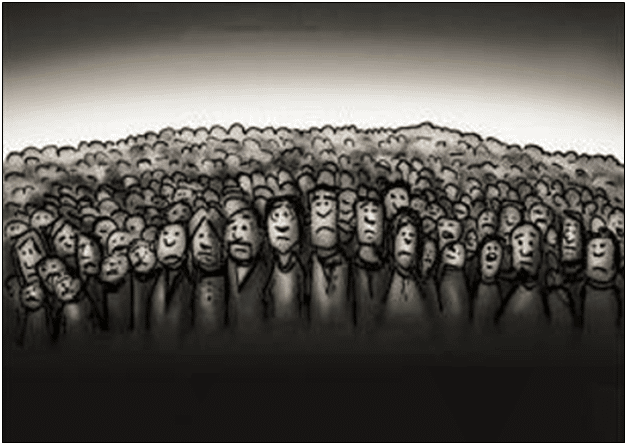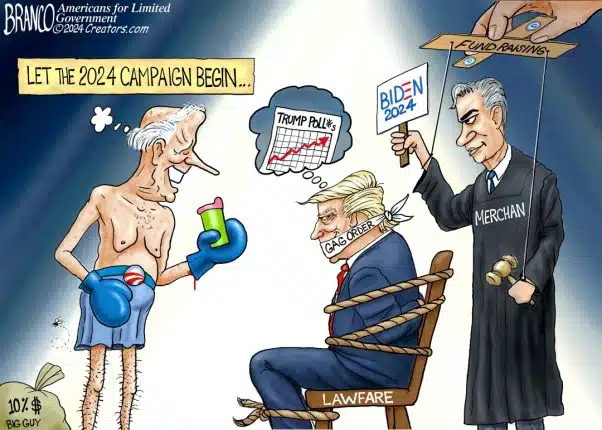The unemployment rate has ticked up off of historic lows to 3.7 percent in May, as 310,000 fewer Americans reported having jobs and those saying they were unemployed increased by 440,000, the latest data by the Bureau of Labor Statistics shows.
That’s still pretty low by historic standards, but nothing lasts forever. Following periods of peak employment and high inflation, the economy can tend to overheat, consumer spending slows down and on a periodic basis, recessions occur, resulting in jumps in unemployment. The questions include when and to what extent that upheaval in labor markets will be.
Similar drops in the household survey reports of employment were felt in 2022, with257,000 and 66,000 fewer Americans reported having jobs in the BLS household survey in Oct. 2022 and Nov. 2022, respectively, offset by gains through the first half of 2023—until now. There were also dips of 346,000 in April 2022 and 242,000 in June 2022 that were offset by gains in May 2022 and July 2022.
Which, is usually what happens during peak employment, where the unemployment rate really cannot go much lower, and so the level of employment begins clanking around the top, often followed by a drop that is significant. For example, by 2024, the White House Office of Management and Budget (OMB) has projected that the unemployment rate will rise to about 4.6 percent. That’s an implied 2 million jobs lost or so, and much of it remains on the horizon.
On inflation, which peaked at 9.1 percent in June 2022 and was down to 5 percent in March. Usually peak inflation followed by a slowdown in the increase in prices also precedes a downturn. As it continues to normalize, watch for more upheaval in labor markets.
In the meantime, job openings measured by the Bureau of Labor Statistics increased by 358,000 to 10.1 million. That’s still more than 15.9 percent below the 12 million peak in March 2022. Although a recent addition to the BLS plethora of data, job openings in the past three recessions have tended to dip significantly.
But as the number of Americans retiring has steadily increased over the past decade, so have the number of job openings. Americans not in the labor force 65 years old and older has increased 3.27 million since Feb. 2020, from 28.3 million to 31.4 million today. In Jan. 2009 it was just 20.1 million. That’s the Baby Boomer retirement wave, coupled with comparatively lower fertility rates as more women entered the workforce in subsequent generations — and it continues to have massive ripple effects throughout the economy.
The question is whether those job openings will be enough to forestall job losses in labor markets indefinitely or at least through a period that would have otherwise resulted in the unemployment rate steadily ticking upward.
The situation could be similar to that of Japan whose demographic decline the past few decades with a rapidly aging population followed very low fertility rates. During the financial crisis and Great Recession of 2008 and 2009, the unemployment rate only reached 5.7 percent (here it reached 10 percent in Oct. 2009), and just 3.2 percent during the Covid recession.
There is also the spread between 10-year treasuries and 2-year treasuries, an inversion of which usually predicts a recession on the horizon as long term growth is perceived to be lower than short term growth. The 10-year, 2-year inverted briefly in March 2022 and then succumbed fully in July 2022, where it has remained. Usually, as the economy turns into a recession, the yield curve will tend to uninvert itself as the Federal Reserve ramps up purchases of treasuries and drops interest rates. The Fed hasn’t done that yet, after hiking interest rates for the past year, and may not until inflation returns to more normal levels.
Other troubling signals include the recent regional bank failures: First Republic Bank, Silicon Valley Bank and Signature Bank all were placed into FDIC receivership in the past few months—the second, third and fourth largest bank failures in American history.
These have come as interest rates have risen by the Federal Reserve and private banks to combat sticky inflation in the U.S., thereby lowering the book value of trillions of dollars of U.S. treasuries that banks and other financial institutions hold onto. There could be as much as $620 billion of unrealized losses sitting on bank balance sheets.
Overall, the SPDR S&P Regional Banking ETF is down 38 percent since February. Shares of PacWest have collapsed nearly 76 percent since February, Western Alliance Bancgroup by 56 percent and Zions Bancorpation by 49.4 percent. Similar drops in the stock values of First Republic, Silicon Valley and Signature banks signaled their ends too, and could point to more financial stress on the horizon.
These are all things that tend to happen during recessions. They might be offset to some degree by the spare labor markets we are currently experiencing, with millions of job openings even as the economy is slowing down. That could spare the American people from the worst of what would otherwise be a steep increase in unemployment. Time will tell.
Robert Romano is the Vice President of Public Policy at Americans for Limited Government.








